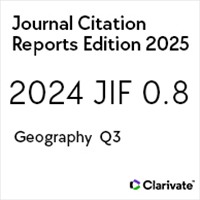Integración económica en América del Norte: lección de la experiencia de la Unión Europea para el TLCAN
Economic integration in North America: Learning from the experience of the European Union for the NAFTA
https://doi.org/10.21670/ref.2009.19.a06
Palabras clave:
Sincronización económica, integración económica avanzada, cointegración, ciclo comúnResumen
En el presente documento se analiza, con base en estudios de diversos autores, el grado de sincronización económica de los países de Europa Central y Oriental con respecto a la Unión Europea en el periodo inmediato anterior a las adhesiones del año 2004. Posteriormente, se determina de manera formal el grado de sincronización económica en América del Norte para el periodo de transición del TLCAN. En particular, se estiman modelos de cointegración y características comunes de corto plazo para los pibs de Canadá, México y Estados Unidos. Encontramos que las economías de la región han alcanzado un grado significativo de integración. Con base en estos resultados, y a los hechos identificados para el caso europeo, se esbozan las posibilidades de una evolución del TLCAN hacia una integración económica más profunda.Abstract In this document we analyze, based on previous work from various authors, the degree of economic synchronization between Central and Eastern European countries and the European Union prior to the 2004 adhesion treaties. Then, we formally determine the degree of economic synchronization in North America for the nafta transitional period. In particular, we perform cointegration and common features tests for the gdps of Canada, Mexico and the US. We find that the economies of the region are highly integrated. Based on these results, and the facts identified for the European case, we discuss some possibilities for the evolution of nafta into a deeper form of economic integration.
Citas
Castillo, R. y A. Díaz-Bautista (2003), “Testing for Unit Roots: Mexico’s GDP”, Momento Económico, 124, pp. 2-10.
_____ y R. Ramírez (2008), “Economic Integration in North America”, Applied Econometrics and International Development, núm. 8, pp. 111-122.
Chiquiar, D. y M. Ramos-Francia (2005), “Trade and Business-Cycle Synchronization: Evidence from Mexican and U.S. Manufacturing Industries”, North American Journal of Economics and Finance, núm 16, pp. 187-216. DOI: https://doi.org/10.1016/j.najef.2004.12.001
Cuevas, A., M. Messmacher y A. Werner (2003), “Sincronización macroeconómica entre México y sus socios comerciales del TLCAN”, Documento de Investigación 2003-1, Banco de México. DOI: https://doi.org/10.36095/banxico/di.2003.01
Darvas, Z. y G. Szapáry (2004), Business Cycle Synchonization in the Enlarged EU, Magyar Nemzrti Bank, Budapest, Hungría.
Eickmeier, S. y J. Breitung (2005), How Synchronized are Central and East European Economies with the Euro Area? Evidence from Structural Factor Model, Deutsche Bundesbank, Frankfurt/M., Germany. DOI: https://doi.org/10.2139/ssrn.2785106
Fernandez, V. y A. Kutan (2005), “Do Regional Integration Agreements Increase Business Cycle Convergence? Evidence from APEC and NAFTA”, Working Paper 765, William Davidson Institute. DOI: https://doi.org/10.2139/ssrn.729308
Firdmuc, J. e I. Korhonen (2004), “A Meta Analysis of Business Cycle Correlations Between the Euro area, CEEC’s and SEEC’s: What do we Know?”, BOFIT Discussion Papers, Bank of Finland, Helsinki. DOI: https://doi.org/10.2139/ssrn.1015447
Gulsum, Y. (2003), “The Economic Impact of the Fifth Enlargement on the CEECs and Turkey”, Treasury Journal, Special Issue, vol. 16, diciembre de 2003, Turkey, Undersecretary of the Treasury.
Guisan M., E. Aguayo y A. Carballas (2004), “Economic Growth and Cycles in Poland, Hungary, Czech Republic, Slovakia and Slovenia: A Comparison with Spain, Austria and other EU Countries, 1950- 2002”, Working Paper Series, Economic Development, núm. 79, Euro- American Association of Economic Development Studies, España.
Hecq, A. (1998), “Does Seasonal Adjustment Induce Common Cycles?”, Economic Letters, núm 59, pp. 289-297. DOI: https://doi.org/10.1016/S0165-1765(98)00065-2
Herrera, J. (2004), “Business Cycles in Mexico and the United States: Do They Share Common Movements?”, Journal of Applied Economics, núm 7, pp. 303-323. DOI: https://doi.org/10.1080/15140326.2004.12040613
Issler, J. y F. Vahid. (2001), “Common Cycles and the Importance of Transitory Shocks to Macroeconomic Aggregates”, Journal of Monetary Economics, núm 47, pp. 449-475. DOI: https://doi.org/10.1016/S0304-3932(01)00052-6
Johannes, L. (2002), “Progress in Transition: Central and Eastern Europe after a Decade of Reform”, Center for Research on Economic Development & Policy Reform Stanford University, mayo de 2002.
Johansen, S. (1991), “Estimation and Hypothesis Testing of Cointegration Vectors in Gaussian Vector Autoregressive Models”, Econometrica, núm. 59, pp. 1551-1580. DOI: https://doi.org/10.2307/2938278
Mejía-Reyes P., E. Gutiérrez y C. Farías (2006), “La sincronización de los ciclos económicos de México y Estados Unidos”, Investigación Económica, núm 65, pp. 15-46.
Rebolledo, C. y E. Aguayo (2004), “Crecimiento económico en los PECOS durante la etapa de la transición”, Universidad Santiago de Compostela, Ponencia presentada en la XVIII Reunión Anual.
Anales de Economía Aplicada, León, España.
Rosmy, L. y D. Simons. (2007), “Is there a North American Business Cycle? An Analysis of the Period 1963-2002”, Applied Econometrics and International Development, núm. 7, pp. 109-120.
Torres, A. y O. Vela (2003), “Trade Integration and Synchronization between Business Cycles of Mexico and the United States”, North American Journal of Economics and Finance, núm. 14, pp. 319-342. DOI: https://doi.org/10.1016/S1062-9408(03)00025-1
Vahid, F. y R. Engle. (1993), “Common Trends and Common Cycles”, Journal of Applied Econometrics, núm. 8, pp. 341-360.
WoŸniak, P. y W. Paczyñski (2007), “Business Cycle Coherence between the Euro Area and the EU New Member States: a Time- Frequency Analysis”, Center for Social and Economic Research,
Polonia, julio de 2007.
World Bank (2005), Eastern Europe’s Transition: Building Institutions, Presented in Economic Growth in the 1990s: Learning from a Decade of Reform, abril de 2005.































